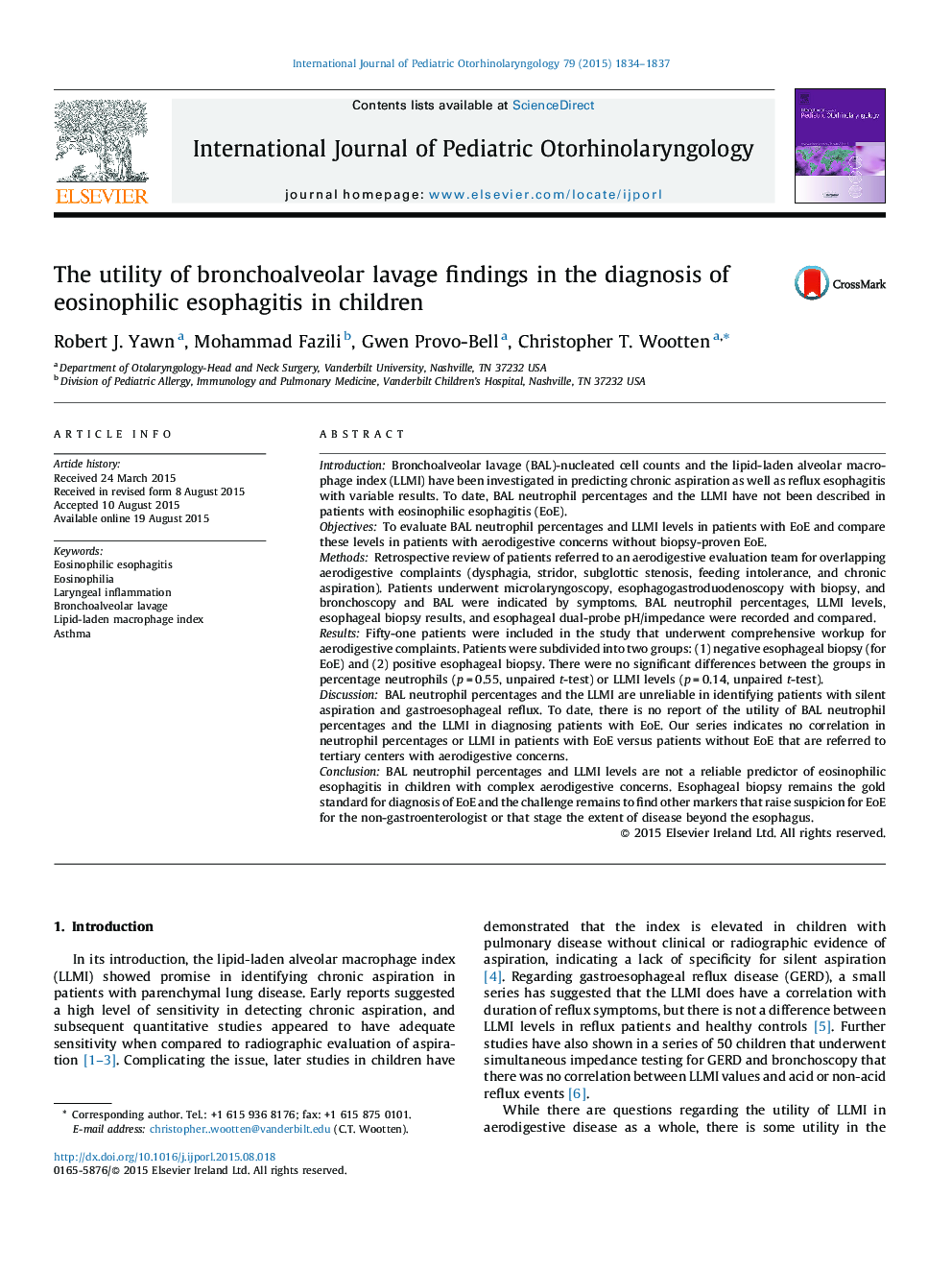| کد مقاله | کد نشریه | سال انتشار | مقاله انگلیسی | نسخه تمام متن |
|---|---|---|---|---|
| 4111740 | 1605990 | 2015 | 4 صفحه PDF | دانلود رایگان |
IntroductionBronchoalveolar lavage (BAL)-nucleated cell counts and the lipid-laden alveolar macrophage index (LLMI) have been investigated in predicting chronic aspiration as well as reflux esophagitis with variable results. To date, BAL neutrophil percentages and the LLMI have not been described in patients with eosinophilic esophagitis (EoE).ObjectivesTo evaluate BAL neutrophil percentages and LLMI levels in patients with EoE and compare these levels in patients with aerodigestive concerns without biopsy-proven EoE.MethodsRetrospective review of patients referred to an aerodigestive evaluation team for overlapping aerodigestive complaints (dysphagia, stridor, subglottic stenosis, feeding intolerance, and chronic aspiration). Patients underwent microlaryngoscopy, esophagogastroduodenoscopy with biopsy, and bronchoscopy and BAL were indicated by symptoms. BAL neutrophil percentages, LLMI levels, esophageal biopsy results, and esophageal dual-probe pH/impedance were recorded and compared.ResultsFifty-one patients were included in the study that underwent comprehensive workup for aerodigestive complaints. Patients were subdivided into two groups: (1) negative esophageal biopsy (for EoE) and (2) positive esophageal biopsy. There were no significant differences between the groups in percentage neutrophils (p = 0.55, unpaired t-test) or LLMI levels (p = 0.14, unpaired t-test).DiscussionBAL neutrophil percentages and the LLMI are unreliable in identifying patients with silent aspiration and gastroesophageal reflux. To date, there is no report of the utility of BAL neutrophil percentages and the LLMI in diagnosing patients with EoE. Our series indicates no correlation in neutrophil percentages or LLMI in patients with EoE versus patients without EoE that are referred to tertiary centers with aerodigestive concerns.ConclusionBAL neutrophil percentages and LLMI levels are not a reliable predictor of eosinophilic esophagitis in children with complex aerodigestive concerns. Esophageal biopsy remains the gold standard for diagnosis of EoE and the challenge remains to find other markers that raise suspicion for EoE for the non-gastroenterologist or that stage the extent of disease beyond the esophagus.
Journal: International Journal of Pediatric Otorhinolaryngology - Volume 79, Issue 11, November 2015, Pages 1834–1837
